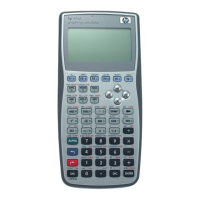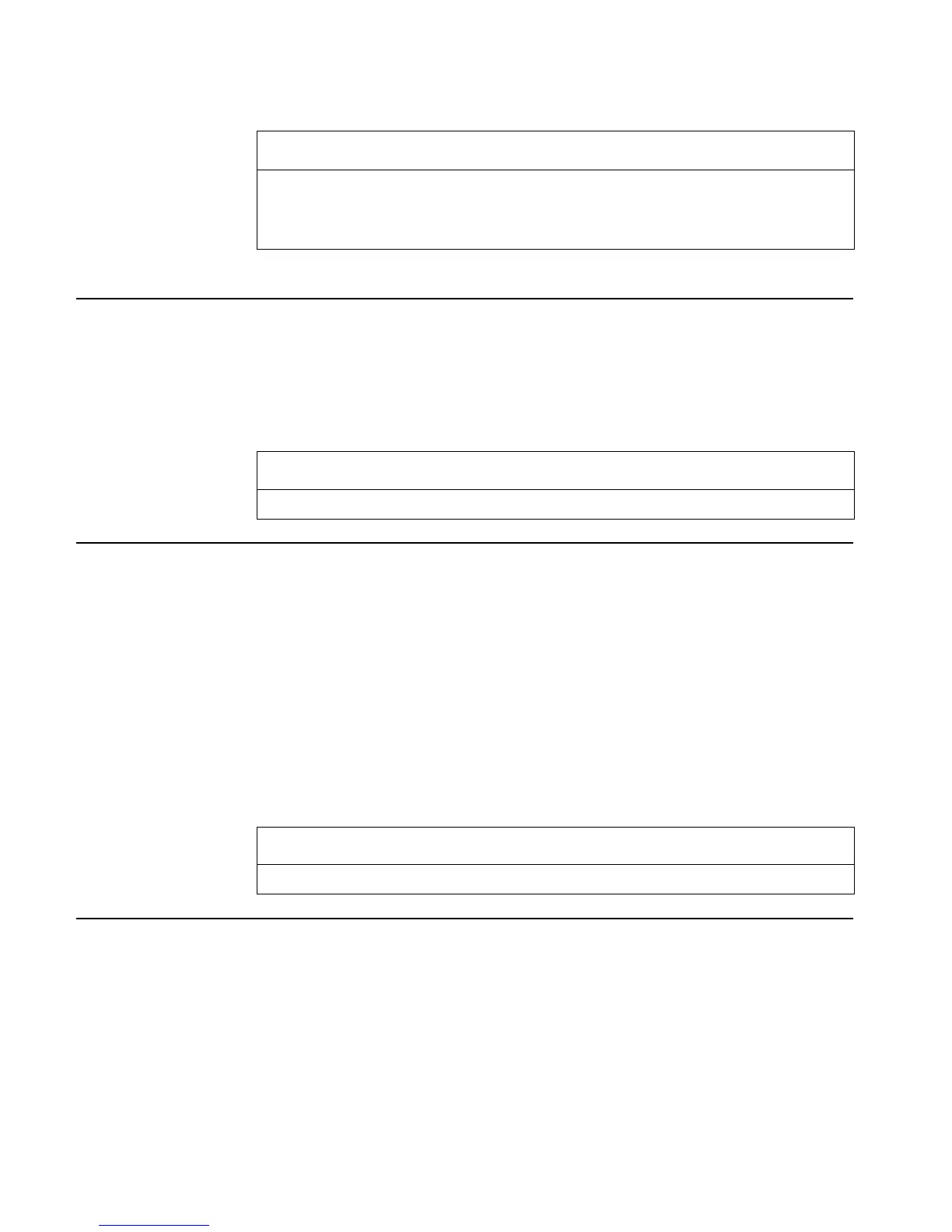3-10 Full Command and Function Reference
Access: !°LGROBLANIMATE ( °is the left-shift of the Nkey).
Input/Output:
Ln+1.../A1 L1/An+1 L1/I1
grob
n
...grob
1
n
grobs
→
same stack
grob
n
...grob
1
{ n {#X#Y } delay
rep }
→
same stack
L = Level, A = Argument, I = item
See also: BLANK, →GROB
ANS
Type: Command
Description: Recalls the nth answer from history (algebraic mode only), where n is an integer. In RPN mode, it
performs the LASTARG command.
Access: !î ( îis the left-shift of the `key).
Input/Output:
Level 1/Argument 1 Level 1/Item 1
n
→
obj
n
See also: LAST, LASTARG
APPLY
Type: Function
Description: Apply to Arguments Function: Creates an expression from the specified function name and
arguments.
A user-defined function f that checks its arguments for special cases often can
't determine
whether a symbolic argument x represents one of the special cases. The function f can use
APPLY to create a new expression f(x). If the user now evaluates f(x), x is evaluated before f, so
the argument to f will be the result obtained by evaluating x.
When evaluated in an algebraic expression, APPLY evaluates the arguments (to resolve local
names in user-defined functions) before creating the new object.
Access: …µ
APPLY
Input/Output:
Level 2/Argument 1 Level 1/Argument 2 Level 1/Item 1
{ symb
1
... symb
n
} 'name'
→
'name(symb
1
... symb
n
)'
See also: QUOTE, |
ARC
Type: Command
Description: Draw Arc Command: Draws an arc in PICT counterclockwise from x
θ
1
to x
θ
2
, with its center at
the coordinate specified in argument 1 or level 4 and its radius specified in argument 2 or level 3.
ARC always draws an arc of constant radius in pixels, even when the radius and center are
specified in user-units, regardless of the relative scales in user-units of the x- and y-axes. With
user-unit arguments, the arc starts at the pixel specified by (x, y) + (a, b), where (a, b) is the
rectangular conversion of the polar coordinate (x
radius
, x
θ
1
). The resultant distance in pixels from
the starting point to the centre pixel is used as the actual radius, r'. The arc stops at the pixel
specified by (r', x
θ
2
).

